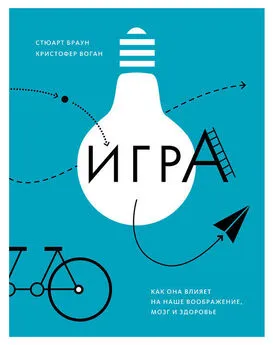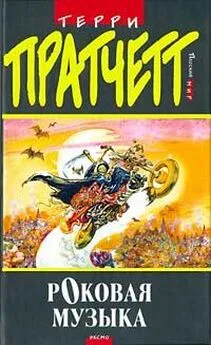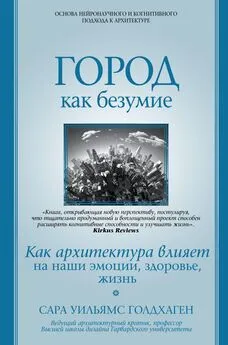Виктория Уильямсон - Мы – это музыка. Как музыка влияет на наш мозг, здоровье и жизнь в целом
- Название:Мы – это музыка. Как музыка влияет на наш мозг, здоровье и жизнь в целом
- Автор:
- Жанр:
- Издательство:Манн, Иванов и Фербер
- Год:2016
- Город:Москва
- ISBN:978-5-00057-660-1
- Рейтинг:
- Избранное:Добавить в избранное
-
Отзывы:
-
Ваша оценка:
Виктория Уильямсон - Мы – это музыка. Как музыка влияет на наш мозг, здоровье и жизнь в целом краткое содержание
Прочтение этой книги, возможно, даст идеи, как правильно применить силу музыки в ваших обстоятельствах.
Эта книга будет интересна в первую очередь тем, кто интересуется влиянием музыки на человеческую психику и физиологию.
На русском языке публикуется впервые.
Мы – это музыка. Как музыка влияет на наш мозг, здоровье и жизнь в целом - читать онлайн бесплатно полную версию (весь текст целиком)
Интервал:
Закладка:
330
Schlagman, S., and Kvavilashvili, L. (2008), ‘Involuntary autobiographical memories in and outside the laboratory: How different are they from voluntary autobiographical memories?’, Memory and Cognition, 36 (5), 920–932.
331
Sloboda, J. (2005), Exploring the musical mind: Cognition, Emotion, Ability, Function. Oxford: Oxford University Press.
332
Saarikallio, S. (2012), ‘Cross cultural approaches to music and health’, in R.A.R Macdonald, G. Kreutz and L. Mitchell (eds.) Music, Health and Wellbeing (pp. 477–490). Oxford: Oxford University Press.
333
http://staff.bath.ac.uk/ecsscw/But_what_is_Wellbeing.pdf.
334
Macdonald, R.A.R, Kreutz, G., and Mitchell, L. (eds.) (2012), Music, Health and Wellbeing. Oxford, Oxford University Press.
335
Bruscia, K.E. (1998), Defining Music Therapy (2nd edn). Gilsum: Barcelona Publishers.
336
Gold et al. (2011), ‘Music therapy or music medicine?’, Psychotherapy and Psychosomatics , 80, 304.
337
Lane, D. (2011), ‘Music as Medicine, Music and the Brain’ (podcast), available at: http://www.loc.gov/podcasts/musicandthebrain/podcast_lane.html.
338
Cepeda, M.S., Carr, D.B., Lau, J., and Alvarez, H. (2006), ‘Music for pain relief, Cochrane Database of Systematic Reviews, Issue 2. Art. No.: CD004843. DOI: 10.1002/14651858.CD004843.pub2.
339
Ayoub, C.M., et al. (2005), ‘Music and ambient operating room noise in patients undergoing spinal anesthesia’, Anesthesia & Analgesia , 100 (5), 1316–1319.
340
Salimpoor, V.N., et al. (2011), ‘Anatomically distinct dopamine release during anticipation and experience of peak emotion to music’, Nature Neuroscience , 14, 257–262.
341
Salimpoor, V.N., et al. (2013), ‘Interactions Between the Nucleus Accumbens and Auditory Cortices Predict Music Reward Value’, Science , 216–219.
342
McKinney, C.H., et al. (1997), ‘Effects of guided imagery and music (GIM) therapy on mood and cortisol in healthy adults’, Health Psychology , 16 (4), 390–400. Koelsch, S., et al. (2011), ‘Effects of Music Listening on Cortisol Levels and Propofol Consumption during Spinal Anesthesia’, Frontiers in Psychology , 2, 58.
343
Lane, D. (1991), ‘The effect of a single music therapy session on hospitalized children as measured by salivary immunoglobulin A, speech pause time, and a Patient Opinion Likert Scale’, PhD Thesis available at http://rave.ohiolink.edu/etdc/view?acc_num=caselO55429377.
344
Doheny, L., et al. (2012), ‘Exposure to biological maternal sounds improves cardiorespiratory regulation in extremely preterm infants’, The Journal of Maternal-Fetal and Neonatal Medicine , 25 (9), 1591–1594.
345
Loewy, J., et al. (2013), ‘The Effects of Music Therapy on Vital Signs, Feeding, and Sleep in Premature Infants’, Pediatrics , 131 (5), 902–918.
346
Tramo, M., et al. (2011), ‘Effects of music on physiological and behavioral indices of acute pain and stress in premature infants: Clinical trial and literature review’, Music and Medicine , 3 (2), 72–83.
347
McMahon, E., Wintermark, P., and Lahav, A. (2012), ‘Auditory brain development in premature infants: the importance of early experience’, Annals of the New York Academy of Sciences , 1252, 17–24.
348
Neal, D.O., and Lindeke, L.L. (2008), ‘Music as a nursing intervention for preterm infants in the NICU’, Neonatal Network , 27 (5), 319–327.
349
Standley, J.M. (2002), ‘A meta-analysis of the efficacy of music therapy for premature infants’, Journal of Pediatric Nursing , 17 (2), 107–113.
350
Standley, J.M. (2003), ‘The effect of music-reinforced nonnutritive sucking on feeding rate of premature infants’, Journal of Pediatric Nursing , 18 (3), 169–173. Standley, J.M. (2000), ‘The effect of contingent music to increase non-nutritive sucking of premature infants’, Pediatric Nursing , 26 (5), 493–499.
351
Yildiz, A., and Arikan, D. (2012), ‘The effects of giving pacifiers to premature infants and making them listen to lullabies on their transition period for total oral feeding and sucking success’, Journal of Clinical Nursing , 21 (5–6), 644–656.
352
Allen, R., and Heaton, P.F. (2010), ‘Autism, music, and the therapeutic potential of music in alexithymia’, Music Perception , 27 (4), 251–261. Heaton, P.F. (2009), ‘Assessing musical skills in autistic children who are not savants’, Philosophical Transactions of the Royal Society B: Biological Sciences , 364 (1522), 1443–1447.
353
Hess, K.L, Morrier, M.J., Heflin, L.J., and Ivey, M.L. (2008), ‘Autism treatment survey: services received by children with autism spectrum disorders in public school classrooms’, Journal of Autism and Developmental Disorders , 38 (5), 961–971.
354
Kim, J., Wigram, T, and Gold, C. (2008), ‘The effects of improvisational music therapy on joint attention behaviors in autistic children: a randomized controlled study’, Journal of Autism and Developmental Disorders, 38 (9), 1758–1766.
355
Lim, H.A. (2010), ‘Effect of “developmental speech and language training through music” on speech production in children with autism spectrum disorders’, Journal of Music Therapy , 47 (1), 2–26.
356
Wan, C.Y., et al. (2011), ‘Auditory-Motor Mapping Training as an Intervention to Facilitate Speech Output in Non-Verbal Children with Autism: A Proof of Concept Study’, PLOS ONE, 6 (9) , e25505.
357
Phillips-Silver, J. (2009), ‘On the meaning of movement in music, development and the brain’, Contemporary Music Review, 28 (3), 293–314.
358
Srinivasan, S.M., and Bhat, A.N. (2013), ‘A review of “music and movement” therapies for children with autism: embodied interventions for multisystem development’, Frontiers in Integrative Neuroscience , 7, 22.
359
Jackson, N.A. (2003), ‘A survey of music therapy methods and their role in the treatment of early elementary school children with ADHD’, Journal of Music Therapy , 40 (4), 302–323.
360
Pelham, W.E. Jr, et al. (2011), ‘Music and Video as Distractors for Boys with ADHD in the Classroom: Comparison with Controls, Individual Differences, and Medication Effect’, Journal of Abnormal Child Psychology , 39 (8), 1085–1098.
361
Fan Zhang et al. (2012), ‘Music therapy for attention deficit hyperactivity disorder (ADHD) in children and adolescents (Protocol)’, Cochrane Database of Systematic Reviews 2012, Issue 8. Art. No.: CD010032. DOI: 10.1002/14651858.CD010032.
362
http://www.nhs.uk/Conditions/Dyslexia/Pages/Introduction.aspx.
363
Patel, A.D. (2012), ‘Language, music, and the brain: A resource-sharing framework’, in P. Rebuschat, M. Rohrmeier, J. Hawkins, and I. Cross (eds.), Language and Music as Cognitive Systems (pp. 204–223). Oxford: Oxford University Press. Patel, A.D. (2008), Music, Language, and the Brain. New York: Oxford University Press.
364
Hornickel, J., and Kraus, N. (2013), ‘Unstable Representation of Sound: A Biological Marker of Dyslexia’, The Journal of Neuroscience , 33 (8), 3500–3504.
365
Butzlaff, R. (2000), ‘Can music be used to teach reading?’, Journal of Aesthetic Education , 34 (3/4), 167–178.
366
Forgeard, M., et al. (2008), ‘The relation between music and phonological processing in normal-reading children and children with dyslexia’, Music Perception , 25 (4), 383–390.
367
Overy, K., Nicolson, R.I., Fawcett, A.J., and Clarke, E.F. (2003), ‘Dyslexia and music: Measuring musical timing skills’, Dyslexia , 9 (1), 18–36.
368
Tallal, P., Miller, S., and Fitch, R.H. (1993), ‘Neurological basis of speech: A case of the pre-eminence of temporal processing’, Annals of the New York Academy of Science , 682, 27–47.
369
Overy, K. (2000), ‘Dyslexia, Temporal Processing and Music; The potential of music as an early learning aid for dyslexic children’, Psychology of Music , 28 (2), 218–229.
370
Slater, J., Tierney A., and Kraus, N. (2013), ‘At-risk elementary school children with one year of classroom music instruction are better at keeping a beat’. PLOS ONE. 8 (10): e77250.
371
Cogo-Moreira, H., et al. (2012), ‘Music education for improving reading skills in children and adolescents with dyslexia’, Cochrane Database of Systematic Reviews Issue 8. Art. No.: CD009133. DOI: 10.1002/14651858. CD009133.pub2.
372
http://www.prismlab.org/research_page/research.
373
http://www.cochrane.org/cochrane-reviews.
374
Mansky, P.J., and Wallerstedt, D.B. (2006), ‘Complementary medicine in palliative care and cancer management’, Cancer Journal , 12 (5), 425–431.
375
Aldridge, D., Gustorff, G., and Hannich, H.-J. (1990), ‘“Where am I?” Music therapy applied to coma patients’, Journal of the Royal Society of Medicine , 83 (6), 345–346.
376
Aldridge, D. (1996), Music therapy research and practice in medicine . London: Jessica Kingsley.
377
Bradt, J., Dileo, C, and Grocke, D. (2010), ‘Music interventions for mechanically ventilated patients’, Cochrane Database of Systematic Reviews 2010, Issue 12. Art. No.: CD006902. DOI: 10.1002/14651858.CD006902.pub2.
378
Mackay, J., and Mensah, G.A. (2004). The atlas of heart disease and stroke. Geneva: World Health Organization.
379
Särkämö, T., et al. (2008), ‘Music listening enhances cognitive recovery and mood after middle cerebral artery stroke’, Brain , 131 (3), 866–876.
380
Tsai, P.L., et al. (2013), ‘Listening to classical music ameliorates unilateral neglect after stroke’, American Journal of Occupational Therapy , 67 (3), 328–35.
381
Bodak, R. (2012), ‘Using music to increase spatial awareness in two right hemisphere stroke patients with chronic unilateral neglect’. Unpublished PhD thesis, Goldsmiths, University of London.
382
Интервал:
Закладка:
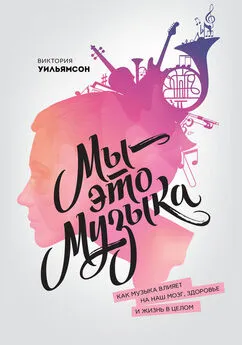

![Аре Бреан - Музыка и мозг [Как музыка влияет на эмоции, здоровье и интеллект]](/books/1068692/are-brean-muzyka-i-mozg-kak-muzyka-vliyaet-na-emoc.webp)
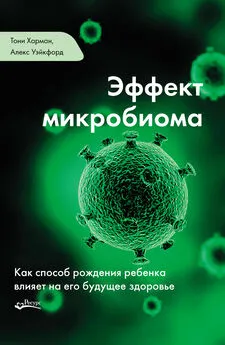

![Виктория Токарева - Тихая музыка за стеной [сборник]](/books/1102057/viktoriya-tokareva-tihaya-muzyka-za-stenoj-sbornik.webp)
